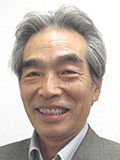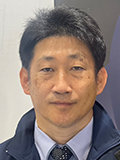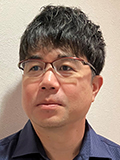Please check Venue as each exhibition has a different lecture Venue. *Please come directly to the seminar Venue.
| Date and Time | Thursday, February 2nd and Friday, February 3rd, 2023 |
|---|---|
| Venue | ASTEC Venue: Seeds & Needs seminar A (East Venue 1) SURTECH Venue: SURTECH/InterAqua Seminar Venue (East Venue 5) |
 For more info
For more info

Palmeso Representative Director Toru Matsubara
Manufacturing that reduces CO2, saves energy, and meets the SDGs is making extensive use of thin films and surface modification. Simulation and MI (materials informatics) are being used in the development of these extremely thin (μm to nm) worlds. Such analysis systems require large amounts of data, but they are said to pose a major challenge in terms of strength because they cannot provide accurate data. The developed MSE test method is a unique test method that can obtain continuous, precise cross-sectional strength information from the material surface, and is particularly effective for gradient materials and multilayer films, and has recently been used to evaluate the strength of interfaces.
In this presentation, we will introduce in detail the evaluation of paints and resins, which are soft materials that are hot recently but difficult to evaluate for strength. We will also touch on the evaluation of DLC thin films, which have extremely high strength. We hope that the visualization and quantification of the strength distribution of very thin films and surfaces will lead to problem solving and innovation for developers and production engineers.
 For more info
For more info

Mr. Hiroyasu Matsumoto, Managing Director of Toyomi Seiko
Protecting the environment with new technology. The chrome-free process was developed to protect our precious earth from river, soil and air pollution caused by hexavalent chromium, which is widely used in surface treatment.
We will disseminate new technologies from Japan to the world that can contribute to efforts that focus on the SDGs and zero emissions.
Surface treatment has become indispensable in today's manufacturing industry, as it improves the surface performance of all kinds of industrial products and various machine parts.
However, this technology has the problem of using many harmful, environmentally regulated substances, and there has been a strong demand for the development of an environmentally friendly surface treatment.
One of the most well-known surface treatment techniques is plating, and hard chrome plating in particular is often used to decorate machine parts and products. The plating process uses hexavalent chromium, a specific hazardous substance, which not only has an adverse effect on the human body, but also causes social problems such as river, soil, and air pollution.
Therefore, we began investigating and researching chrome-free surface treatment technology 7 to 8 years ago, started development about 3 years ago, and announced the chrome-free surface treatment "ERIN®" in June of last year, as mass production was in sight. This "ERIN®" treatment does not use any environmentally hazardous substances in the raw materials or treatment process, and is excellent in all aspects required for surface treatment, such as wear resistance, corrosion resistance, sliding properties, and energy efficiency.
We will bring about major new innovation in an industry that has not been able to find an alternative technology to conventional plating over its long history.
 For more info
For more info

Tetsuya Takahashi, Section Manager, Kobe Steel
In the cutting tool field, the need to meet more stringent machining conditions, such as high-speed machining of difficult-to-cut materials, has increased over time as machine tools have become more powerful. This has resulted in increased demand for improved overall performance for the PVD coatings on tools.
AlCrN, a typical coating for cutting tools, has better hardness and oxidation resistance the higher the Al content in the coating, making it suitable for difficult machining conditions such as high-speed cutting and large depth of cut. However, when the Al content exceeds approximately 65 at.%, the coating structure changes from cubic to hexagonal, causing a problem of reduced performance.
To address this issue, the "AIP-iX" uses newly developed equipment and deposition process to maintain the cubic crystal structure even when the Al content in the AlCrN coating is high, making it possible to deposit a hard coating. This has confirmed an improvement in tool life of approximately 1.5 times compared to high-end tools that are specialized for performance.
In this seminar, we will introduce our PVD vacuum deposition technology and the characteristics of the AlCrN coating deposited using our new PVD equipment "AIP-iX."
Email newsletter distribution/
Direct mail
Click here to stop, change, or delete